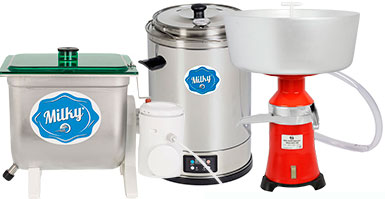Brian Johnston is living proof that the U.S. micro-dairy business is profitable. He is a fourth-generation farmer who has dedicated all his life to his small dairy business.
Luckily for us, Brian agreed to an interview to share his experience with our readers. We asked him a lot of different questions and were surprised by his in-depth knowledge of the dairy industry. His story is full of passion and drama, and we hope you find it useful.
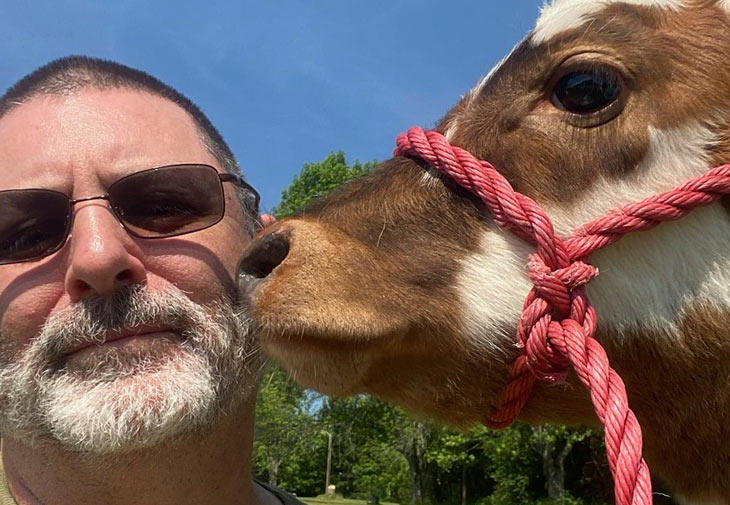
At what age did you get involved in the dairy business? What made you choose it?
I grew up on a dairy farm. I am a fourth-generation dairy farmer and the last in my family. We milked Guernseys, Jerseys and numerous cross-breed cattle. My grandfather liked to “play with colors.” We never knew what color the calf would come out.
Since the 1960s, there have been so many changes in the dairy industry. Once upon a time, one could milk a few cows and still make a decent living. Today, one must produce 3,500 pounds or roughly 1,600 kg of milk daily to get a truck to pick it up. At age 50+, I don’t want to work that hard in my “antique” facilities.
The facility requirements are also regulated very tightly, and even now, the processing dairies have implemented a “herd health plan” where they send veterinarians out to assess your herd’s health. Most don’t know which end of a cow is which and are just out of school. Egos are significant and the experience is small. Most have never seen a cow in real life.
Now, you run a micro-dairy business. What were the main reasons why you started it and was that hard to do? Which cow breed would you recommend for beginners to start with and why?

I started the micro-dairy business because I LOVE cows. I would be lost without them. In the U.S., we have “emotional support animals.” Cows are mine. My friends laugh at me for that. Cows have been my best friends since I was a little child.
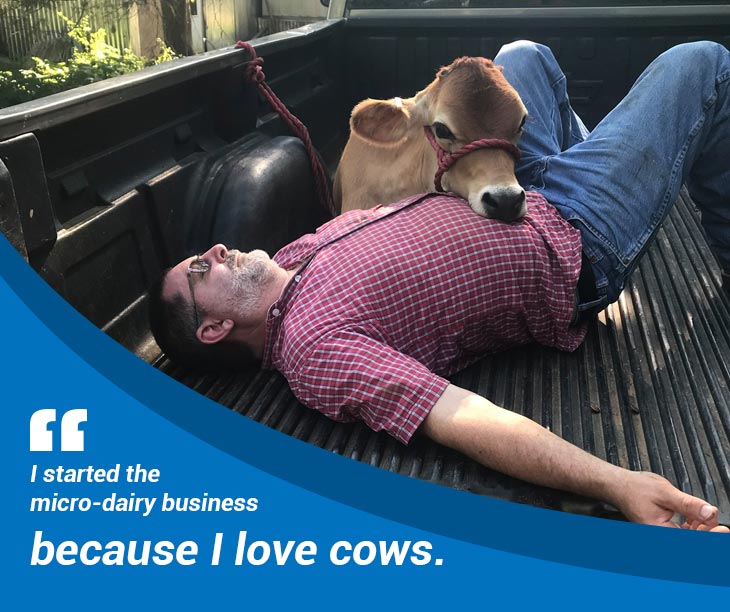
After seven years, I quit working for the neighbors that milk 110+ cows because I couldn’t keep working a 50-60-hour/week job for my dad and milking that many cows. My dad needs more of my attention as he ages, and I need to be able to devote time to him and his care.
I started with Jerseys because they are somewhat easy to find and inexpensive. I am trying to help sustain some rare-breed cows here from the States, but they aren’t as easily attained or as cheap. I choose my breeds based on butterfat/cream and cheese yield capabilities. I do not want quantity—I want quality milk. It’s not how much. It’s how good the milk is.
The Jerseys and Guernseys have A2A2 proteins that make it easier to digest for those with milk allergies too. Guernseys and Jerseys are the easiest to handle and tend to be the calmest. There is also a breed called Dexter that is small for a homestead dairy. They produce good milk and meat and are also calm. Dexters weigh about 600 pounds (275 kg). Most cows will treat you well if you make them pets.

Holsteins have a larger quantity of milk, but they do not have the cream and proteins good for cheese-making. They carry the A1A1 gene for protein as well. The cheese yield is not as good (10 kg of milk to 1 kg of cheese, compared to 8 ½ kg of milk to 1 kg of cheese for Guernseys and Jerseys).
I am actually crossing my cows with Normandes. This will help get rid of some of the inbreeding issues from the American breeds and will maintain cream and cheese yields.
Question from sub-Saharan Africa: People there have cows primarily for beef-eating purposes and secondarily for the production of local milk and tofu. Do you think it is possible to cross-breed a high-yielding, quality milk-producing cow from the USA or Europe (e.g. Jersey) with a local breed to produce milk, butter and cheese from home just like you?
Crossing dairy breeds with local breeds is a good idea no matter where you live. In sub-Saharan Africa, the local/native breeds have been bred over the years to tolerate heat, drought and foraging conditions. Crossing dairy breeds with them will raise the milk yield but still maintain the ability to deal with local weather and foraging conditions. They will have what is called “hybrid vigor.”
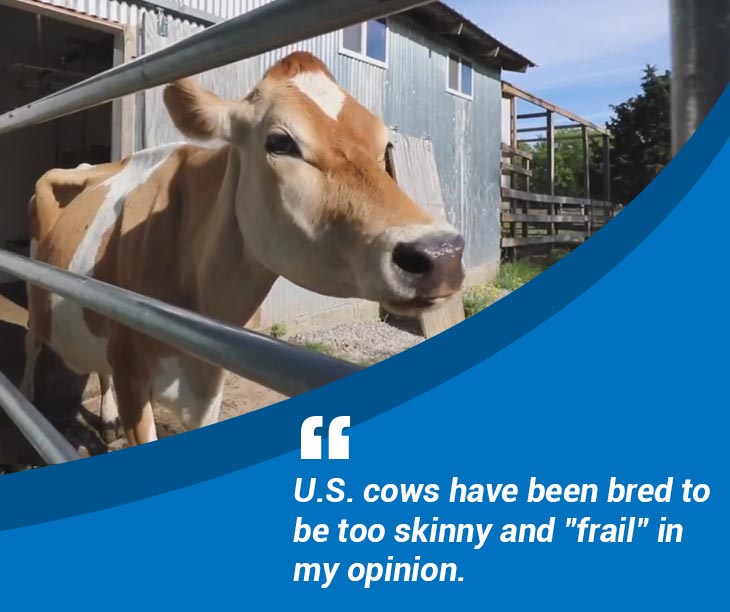
Deciding what to breed back to is the important choice after that. European dairy cows have been bred to still maintain a good carcass for butchering. In my opinion, U.S. cows have been bred to be too skinny and “frail.”
There are a lot of grass-fed vs. grain-fed discussions on the internet. What is your approach? Is it seasonal or year-round? If it is seasonal, when do you plan the birth of your calves?
The grass-fed vs. grain-fed debate has gone on since the advent of livestock feed yards. Cows in confinement tend to milk more consistently than pastured cows and one can control what the cows eat more carefully. I only feed enough concentrate in the barn to keep the cows healthy and calm. I feed about a 1:3 ratio on production (1 kg of feed to 3 kg of milk). Otherwise, my cows only get grass and hay. I let them do the foraging.

The cream content is higher in the winter because of the longer-stemmed forage and less heat. You can always feed to warm up a cow, but you can only do so much to cool them off—especially when temperatures are in the 30s Celsius with high humidity like here this summer.
The proven research is that grass/hay-fed meat and milk are much healthier for you than the confinement-fed animals here in the States. The natural grasses and browsing that cows do produce meat and milk with more vitamins, minerals and healthy fats than what you get from feeding yard-fed animals.
Most large commercial producers in the States feed waste products from the food manufacturing industry (old bread, candy, etc.) to fatten the meat animals quickly. They are not necessarily worried about the quality of meat.
I milk my cows year-round. I stagger the calving process as much as possible to keep a steady flow of milk. Again, customers can be fickle and they are the hardest part of the industry.
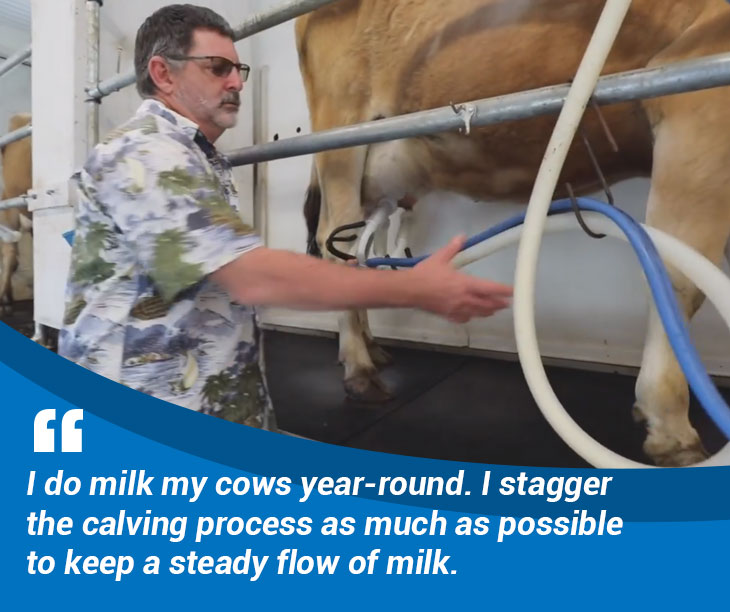
As a micro-dairy owner, what equipment did you need to start with? How much money did it cost you to start this business?
The only equipment required for a micro-dairy owner is a bucket, some sort of filter and a refrigerator. And loads and loads of clean, fresh water. I use bleach as a post-milking teat diluted ¼ to 1 to keep udder infections down (¼ liter of bleach to ¾ liters of water). I also use bleach, dish detergent and a brush to clean my milking equipment.
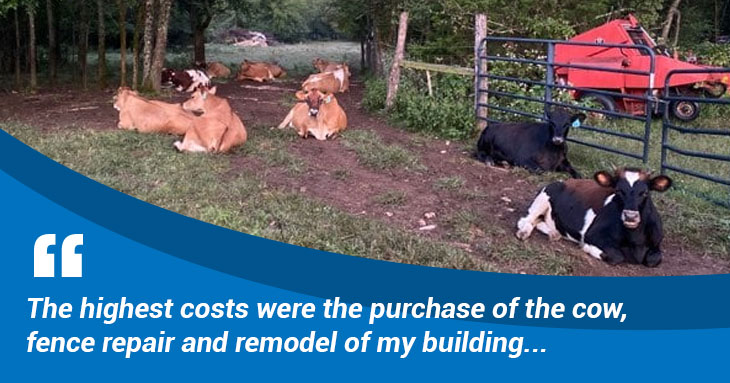
The highest costs were the purchase of the cow, fence repair and the remodel of my building. Any building without a draft is a good place to milk. Even something just three-sided and out of the rain. We in the States think that heating and insulation are necessary, but I have milked by hand in a two-sided shed with a roof.
The other thing one needs is patience and devotion. Cows must be milked daily to continue milk production. Some milk once a day. I personally don’t think that is good and I milk twice a day. But it depends on the milk production of each cow and your preferences and practices.
Cleanliness is the most important key to all milk production and processing.
Dollar amounts for exact figures: $500-$700 per cow from a local dairy. I get their second-hand cows (age, low-udder, three teats, not fitting into the dairy system). Fencing was just what had to be done before I could have cows. My situation cost $1,500. The original building I milked in was an old chicken house built from reclaimed lumber. I am ashamed to tell you what I have spent remodeling the dairy facilities.
As far as I know, it’s much easier for dairies to sell milk only, but you decided to produce dairy products. Why?
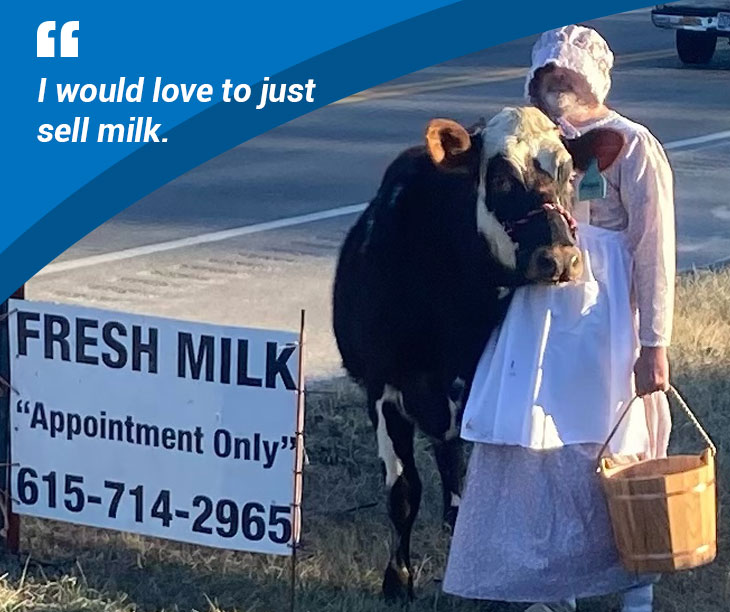
I would love to just sell milk. My life would be a whole lot easier. But customers are fickle. I have my regulars and I have my irregular regulars, then I have the one-time wonders and the ones who call every three months. Cows produce milk daily. I started making cheeses and butter to save the milk from going to waste. Now, I have a following for the butter and cheeses. I feed the skim milk and whey products to my chickens.
Please tell me more about the commercial side of your business. What products do you make and how do you sell them? Who are your main customers?
My main customers are from the internet and a website in my state promoting raw milk. Some are from word of mouth. They tend to be families. Many are from Europe and the Middle Eastern countries where raw milk is prized. Some are Hispanic, and they tend to make cheeses to sell to their friends and families. They are the quantity buyers. I even have a list of folks I rotate through selling colostrum.
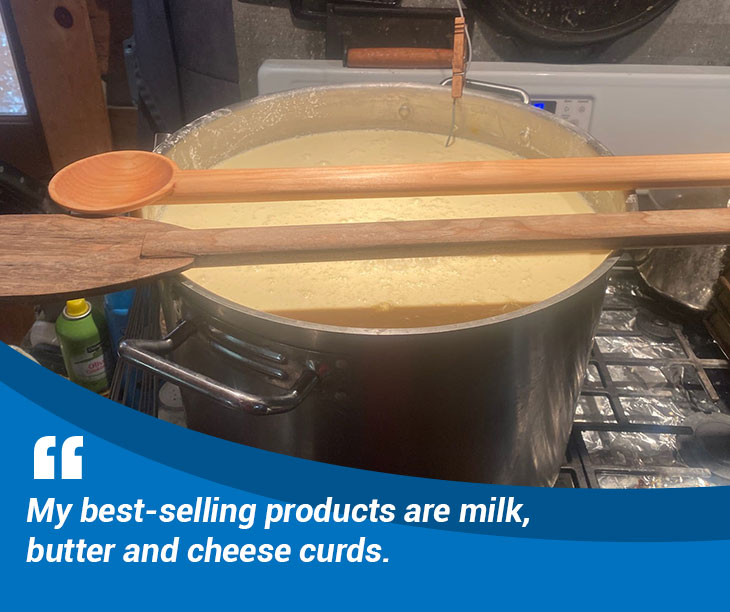
My best-selling products are milk, butter and cheese curds. I make a Colby and a gouda cheese that are pretty good too. Some customers want European-style cultured butter. Some want unsalted butter and some want ghee or clarified butter. Most want the golden butter I have from the Jersey and Guernsey cows.
State laws say I cannot sell to a grocery. We have a “pet milk” or “herd share” requirement for raw milk. I incorporate the herd share costs into my products. I just need to have a sign on my refrigerator saying the legal statement.
Other than eggs, I only do dairy products at this point. I am limited on time for anything else. There was a time when I raised a garden and sold vegetables. I also ground grains and baked fresh bread along with making jellies/jams.
In the raw milk vs. pasteurized milk debate, which side do you take?
I want raw milk. That is one big reason I milk cows. It is easier for the body to digest and we need healthy fats to lubricate our joints.
In the days before we had all the cleansing products available and the knowledge of how to keep things clean, I could understand the reason for pasteurization. The downside is that the body cannot digest the milk as well.
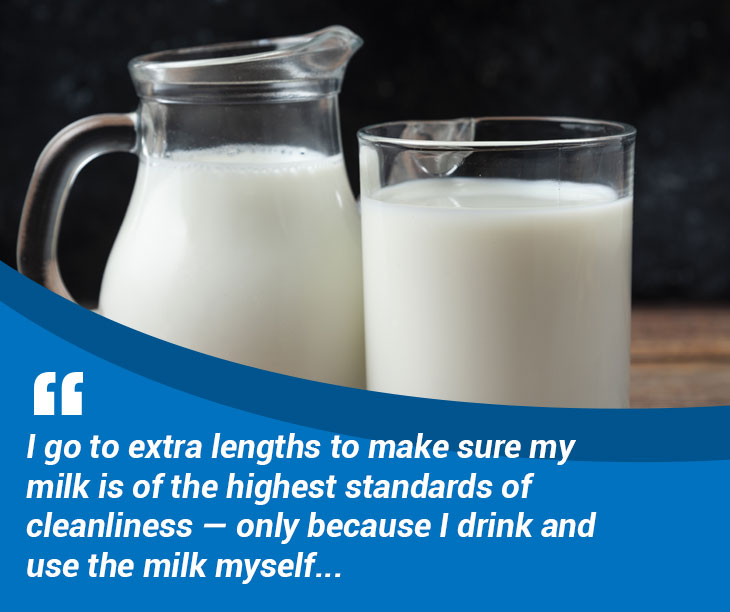
The ultra-pasteurized milk cooks the milk until all the proteins are denatured and are not good for you at all. I go to extra lengths to make sure my milk is of the highest standards of cleanliness—only because I drink and use the milk myself. If I have to medicate a cow, I will not sell the milk until the withdrawal time has passed or I have had the milk tested to make sure there is no drug residue in it. One cannot make cheese with milk that contains antibiotics.
What kind of insurance do you have to cover yourself if one of your customers gets sick? Do you deal with this kind of dairy farm insurance?
My homeowners/farm insurance policy covers me if anyone gets ill.
We recently had a farm in our state that had a legal battle over an illness. They went out of business and it was horrible for the family. Even though it was never proven that the disease came from raw milk consumption, the bacteria were found on that farm. Our senators tried to ban all raw milk sales in our state. Thankfully, that didn’t work.
What equipment is essential for running a micro-dairy? Do you use some special fridge for your products? How do you ripen and keep them?
I personally use a milking system. I had the pipeline from when I had a larger herd of cows. I think a milking system of some sort tends to make sure the milk is more sanitary than hand milking. But that doesn’t mean one can’t milk by hand and keep it clean. A bucket milker for one cow is fairly easy to clean. Again, bleach, dish detergent and a brush.
I just have regular refrigerators for my products. The cheese ripens in a refrigerator that no longer gets as cold as it used to, but it still works for that. I don’t ripen much unless I am making cheeses. Then room temperature or the specified temperature of the process is what I use.
I know that you use a homemade butter churn you made by yourself. Was that easy to do and how much money did you invest in it?
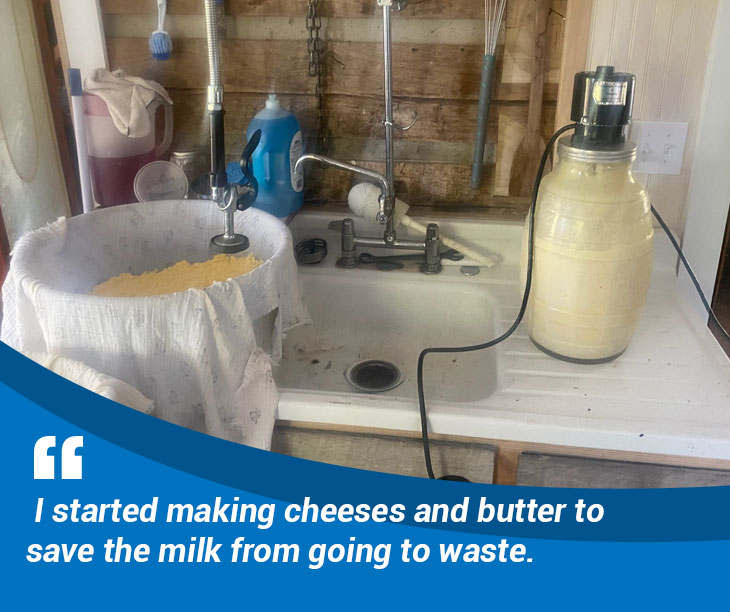
My butter churn is a simple drill press from a hardware/tool store. It was on sale. I buy all I can on sale so I don’t waste money. A simple rust-resistant paint-stirring paddle from any hardware store will work. In small batches, a kitchen blender will work to make butter.
I think the drill press cost me $125 plus sales tax. The paint paddle was inexpensive. The stainless-steel kettle was bought off the internet and was more expensive ($150 or so), but it’s 37 liters and I use it for cheese-making as well as butter-making.
What advice would you give to people who would like to start and run a micro-dairy as well?
Advice? I guess the answer to that is whoever does a micro-dairy and deals with the public needs patience and people skills. That is as important as cow care and product-making skills.
Devotion and dedication are also important. If you already milk cows, you know the requirements. Otherwise, never getting a day away from the cows might make you angry or frustrated. Even with a small herd, I come across issues that make me want to tear out my hair. I am single because my ex didn’t want cows or the dedication that this requires.
Remember, customer satisfaction is the priority, so cleanliness and quality products go with that. If your product or your attitude is sour, you cannot be successful.

Would you like to share some easy butter or cheese recipes for beginners with our subscribers?
I purchased a cheese-making recipe book from the internet on cheesemaking.com.
There are many books out there. I don’t have any personal favorites. It has been trial and error on what sells well and customer preferences. All I can report on butter- and cheese-making is this: MAKE SURE ALL IS SCRUPULOUSLY CLEAN! I have had cheese fails and sour butter because I didn’t make sure my equipment was sterile. Again, bleach, soap and hot water are my friends.
What are your plans for the future?
I mentor a special-needs boy and sometimes his sister on Sundays. They come to help me and we learn so much about farming and cows and have a fun time doing so. I currently don’t have any plans set up for the future. I am divorced. I have no children except my dog, cows and chickens.

I know I will keep doing this as long as I possibly and physically can. I am hoping that by the time my father retires, I will have enough income from the micro-dairy to not have to work a job. That way, I will be able to care for him as he ages.

